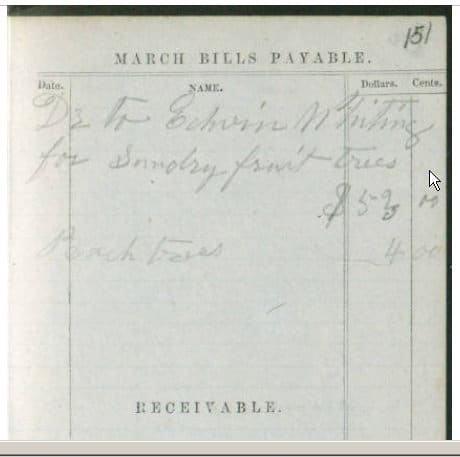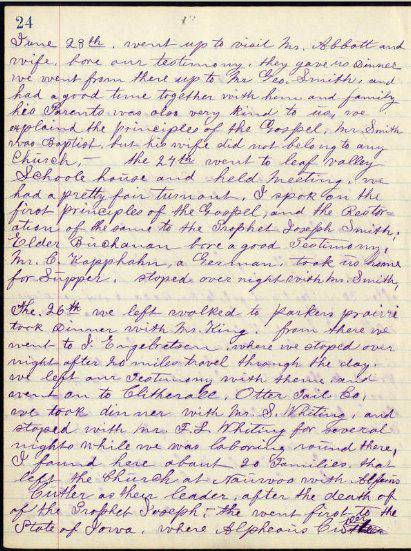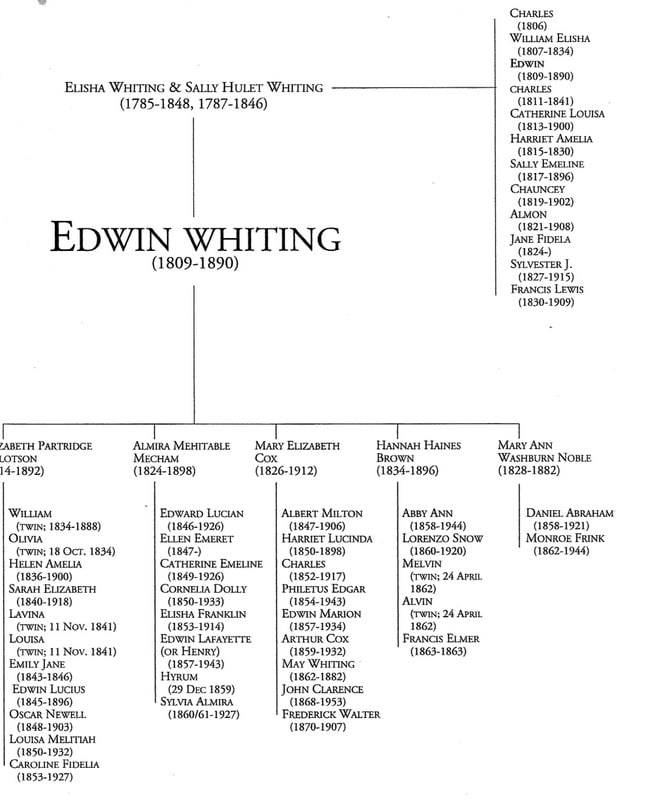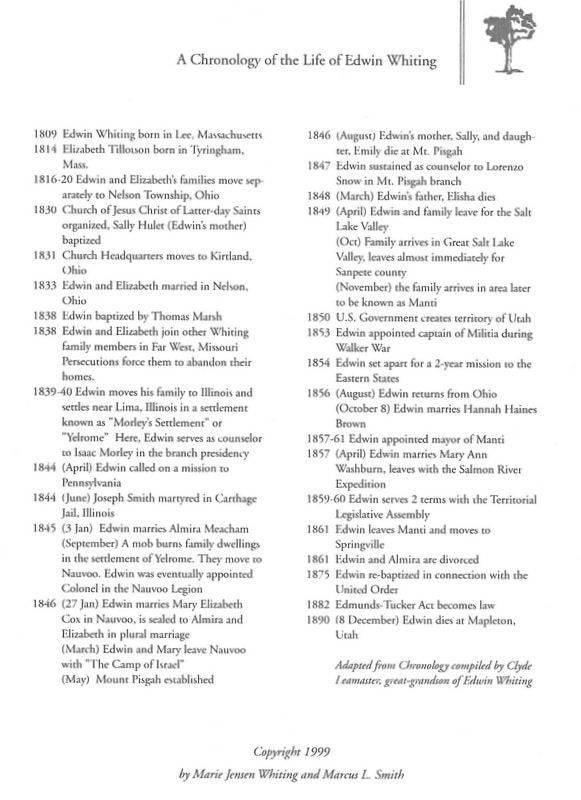Edwin Whiting was born September 9th, 1809, Lee Co., Mass. When a small boy, his father moved to Ohio, were they resided until Edwin was married to Elizabeth P. Tillotson. She too, was born in Mass., Apr. 15th, 1814, town of Tyringham. Her parents also moving west in an early day. They were married in 1833 & lived in Nelson, Ohio, until 1837.
In the autumn of that year they moved to [Missouri], settling in Clay Co. Soon after uniting their fortunes with the Latter Day Saints, they were forced to leave that State, and all their possessions, among which was a nice young orchard which Father had been at great pains to plant. They went with the Saints to [Illinois], and made a home with the branch of the Church in Lima. Here they again planted an orchard and after living there four years, the spirit of mobocracy again was brought to bear, and another expulsion had to be endured by the Saints. Mother was permitted to take her youngest child who was very sick, and a bed, and as many of her household goods as she could into a corner of the lot while they burned the house. Father had to flee for his life, as the mob had sent them word, if any men were seen, they would be shot. In the meantime, teams arrived from Nauvoo, and the homeless Saints were removed to that place for the winter, with the understanding that they were to move on in the spring. Soon after their arrival in Nauvoo, their 8th child, Lucius, was born.
In January 1846, they entered into the Celestial Order of Marriage. Almira Palmer, a widow, and Mary Elizabeth Cox being sealed to Father. In April, of 1846, they took up a line of march for the then unknown regions of the great west, but stopped at Mt. Pisgah, Iowa, three years, preparing for their farther move, with the church, which had now located in the Valley of the Great Salt Lake. In 1849, with a family now numbering fourteen, they started with ox teams to travel across the plains, the journey occupying six months. On the headwaters of the Sweet Water, the company encountered a horrible snow storm, during which many of their cattle died. As their teams were already weak, the remainder of the journey would not have been accomplished, only for the wise precautions of President Young in sending teams out to help them into the Valley. This company brought word that Father and family were chosen to go with a company in charge of Father Morley to settle in Sanpete Co., which they accordingly did, settling in Manti, Utah, after an extended journey of three weeks time from Great Salt Lake City.
It was snowing part of the time and the roads had to be made causing many delays in pioneering new country. When later in November they reached Manti, they were glad to hastily dig in on the South side of the stone quarry, a few dugouts, and move their scant household goods into them, their winter home. Walkers band of Indians were their only neighbors.
The following spring, the town was laid out, and Father prepared to move into a City lot by first transplanting his little trees, which he brought in a small box on the side of the wagon from the States, being very choice, but some had died. However, with all the care they had received, a few still lived and grew. They soon had to move into Forts in order to protect themselves from Indians who had become hostile. In 1855, Father was called on a mission to the States, and the next summer, we were visited by the dread scourge, the grasshoppers. They came in numbers sufficient and took all the growing crops in Sanpete County, leaving the people entirely destitute of support. It took the united efforts of the family to keep the ”wolf from the door.” Pigweed greens, together with a small piece of corn and graham bread, sparingly dealt out to each, was the living of the family. Mother nobly and with the greatest patience, looked after and planned for the welfare of all during this trying time of scarcity.
Father, after three years absence, returned to find all prospering, and as he had brought a collection of choice fruit trees and shrubs of different kinds home with him, after trying faithfully for twelve years to raise fruit with very little success, concluded to move to Springville which he did in 1860. There, he went into the nursery business successfully. Trees from his nursery are scattered over all parts of this territory.
Father died in Springville in December 1890. Mother, who had suffered many years with asthma, lived little more than a year after. She died February 4th, 1892. Our oldest brother, William, died Sept. 20, 1888. Mother’s descendants, thus far, are: 11 children, 6 of whom are living; 57 grandchildren; and 28 great grandchildren. Father’s children, 35, twenty seven of whom are living; 140 grandchildren and 30 great grandchildren. We think Father and Mother lived lives above reproach, as near as mortals can, and both lived the lives of latter Day Saints, and both bore faithful testimonies to the truths of the Gospel, as revealed to the Prophet, Joseph Smith, with whom they were both well acquainted in the last years in his life. All of which we feel to bear testimony too. Composed by the six living children of Edwin and Elizabeth Whiting.
-Amelia Buchanan
-Sarah E. Snow
-Lucius Whiting
-Oscar N. Whiting
-Louisa N. Johnson
-Caroline F. Bromley
March 18, 1892
Note: This history was written on March 18, 1892, in Springville, Utah, two years after the death of Edwin Whiting. It was written by his six surviving children from his first wife, Elizabeth Partridge Tillotson, who died only one month before this history was written on 4 February 1892. The six authors of this history and their ages at the time of writing are as follows: Amelia Whiting Buchanan, 56; Sarah Elizabeth Whiting Snow, 52; Edwin Lucius Whiting, 47; Oscar Newell Whiting, 44; Louisa Melitia Whiting Johnson, 42; and Caroline Fidelia Whiting Bromley, 39. Source: The Marie Whiting Collection. All spelling and punctuation original. The information was divided into paragraphs to make it easier to read. Some of the information given here differs from other accounts.
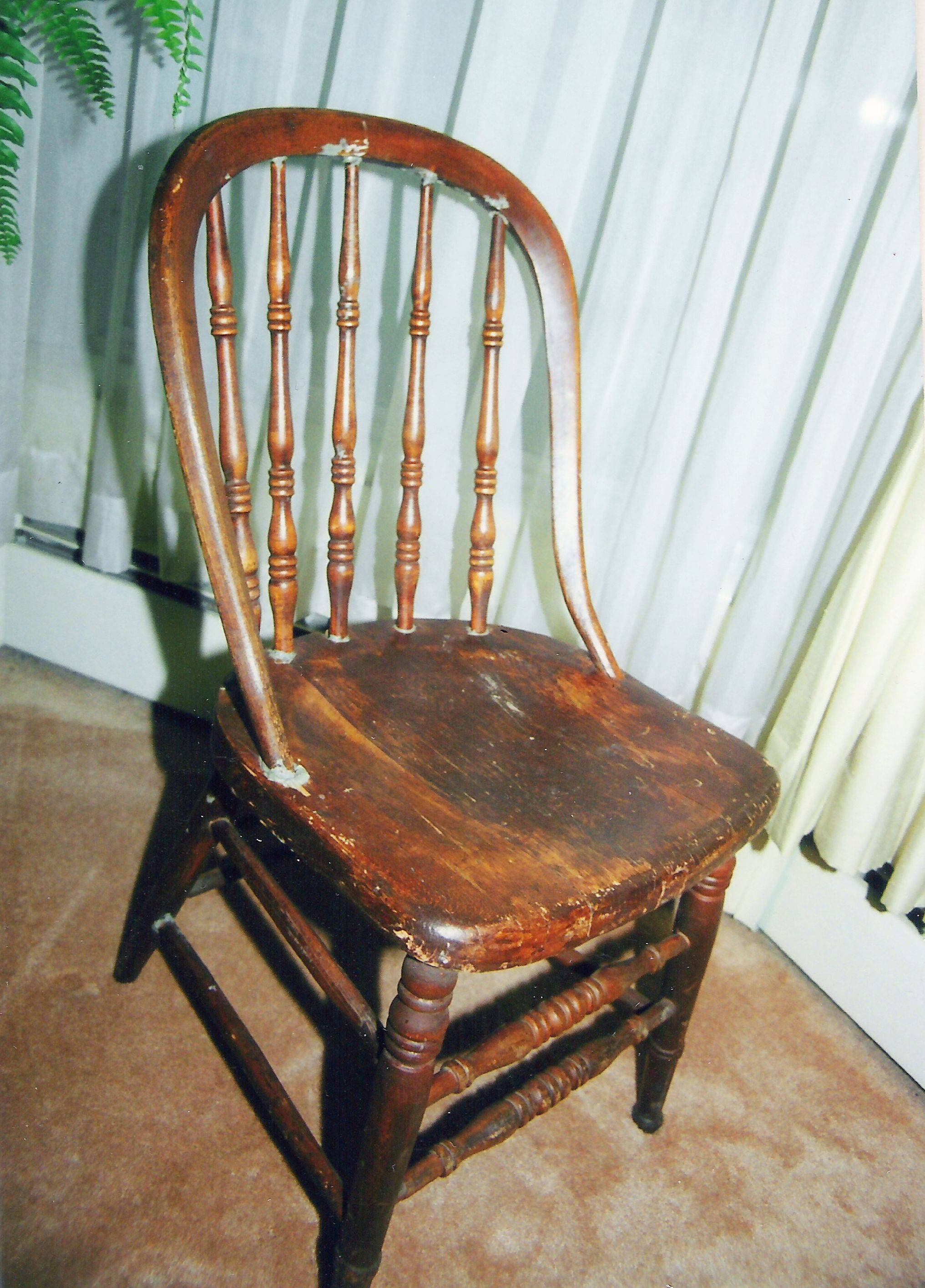
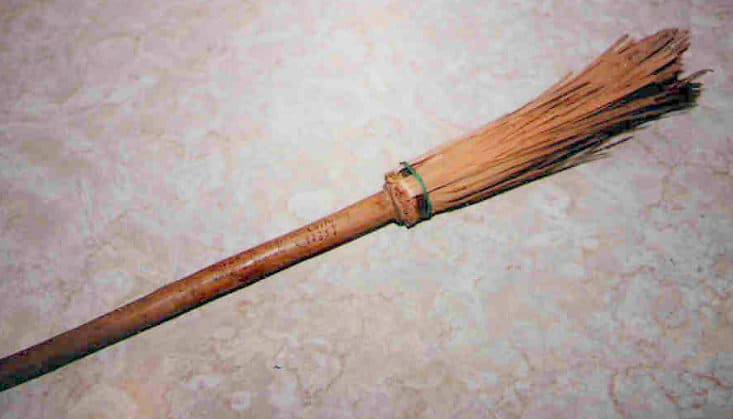
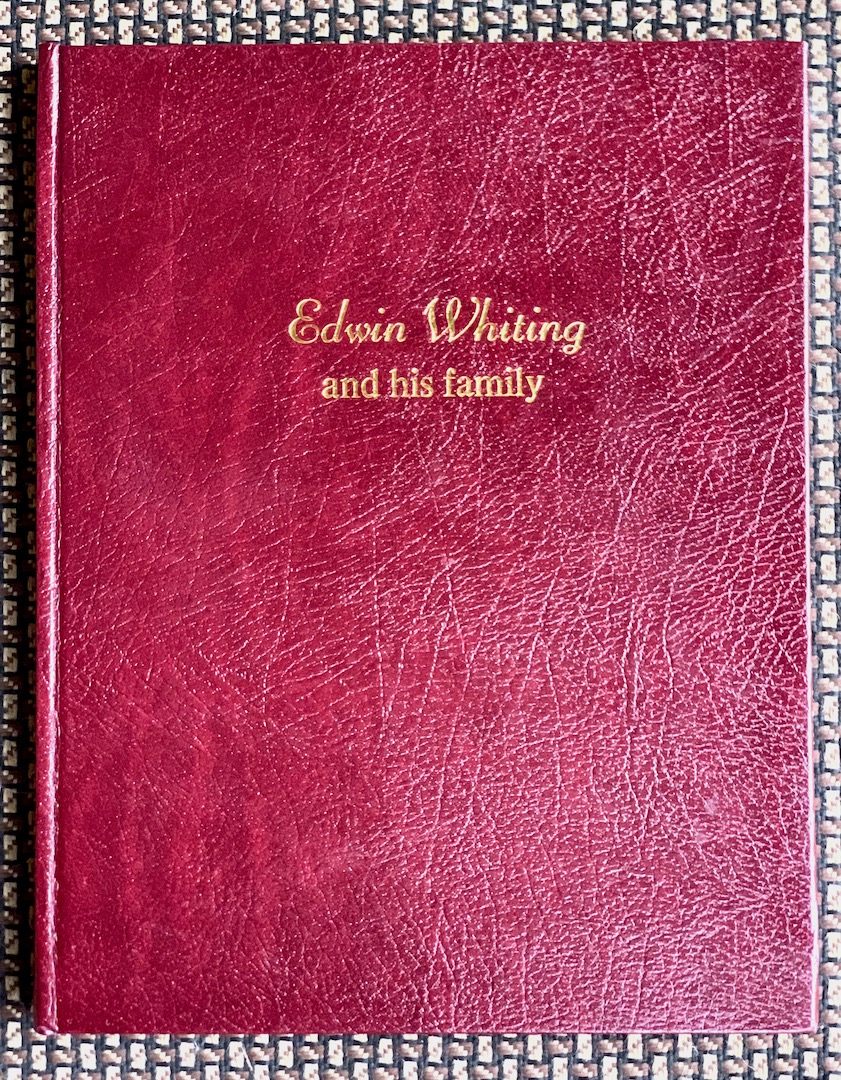

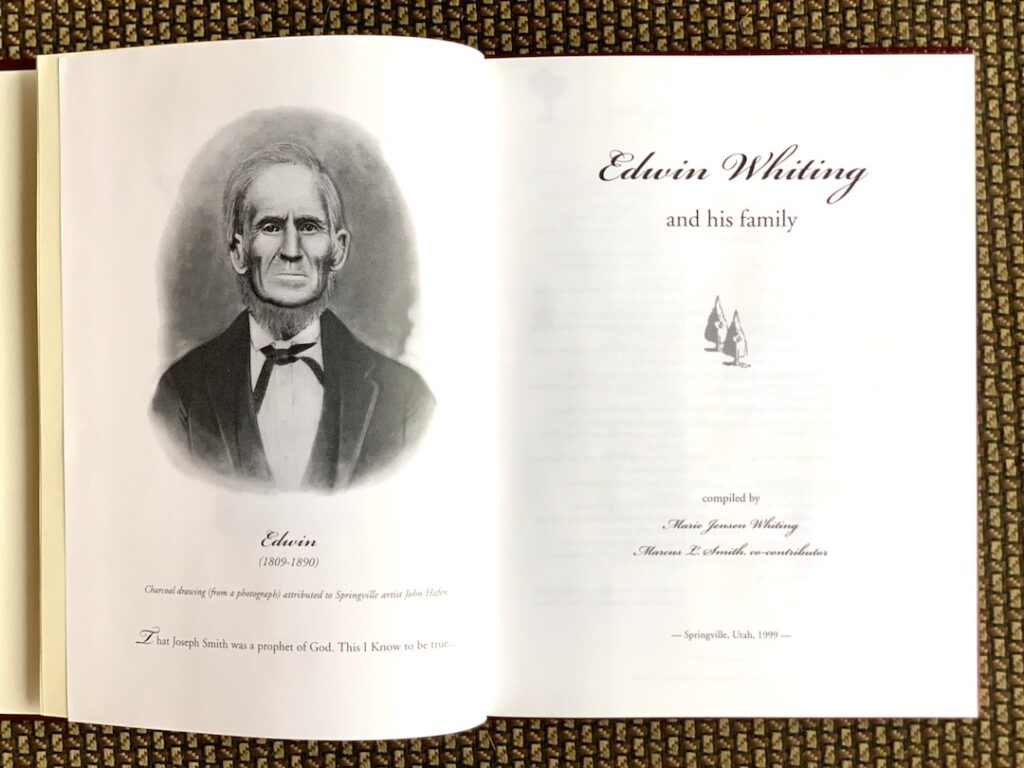
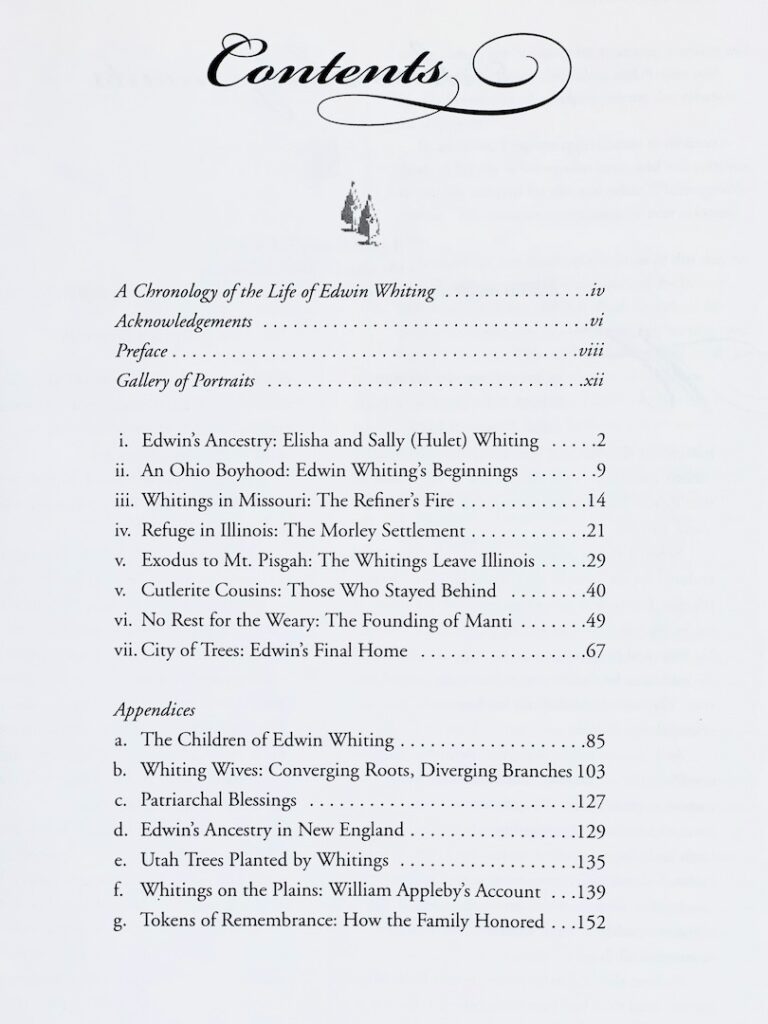


 Daily Enquirer 1888- 03-16, pg 3
Daily Enquirer 1888- 03-16, pg 3
